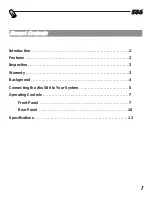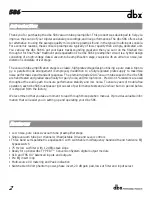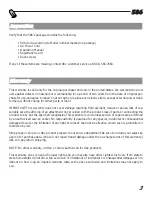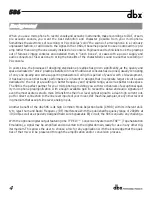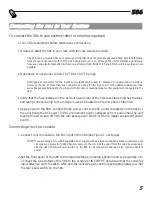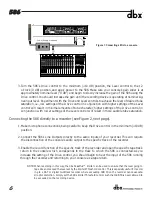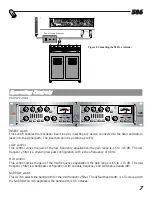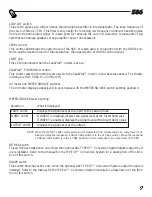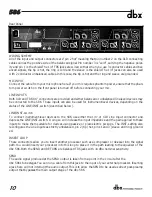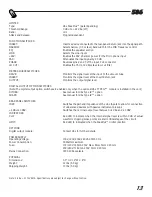
586
¨
FREQUENCY control
This control selects the center frequency for the mid frequency filter. The frequency range is 100 Hz to 8
kHz.
HIGH control
This control varies the gain of the high frequency equalization; the gain range is -15 to +15 dB. The high
frequency filter is a shelving highpass configuration with a knee frequency of 12 kHz.
EQ switch
This switch enables the equalizer. When the equalizer is disabled, the circuit is hardwire bypassed.
PEAK LED
This red LED illuminates when, at any point, the 586’s internal signal level is within 3 dB of clipping. The
signal level is monitored at all critical stages of the circuit
LINE switch
This switch, when lighted, selects the rear-panel line inputs as the source signal to the 586.
DRIVE control
This control sets the amount of gain that will be applied at the input of the vacuum tube stage. The range
of gain available is +10 to +60 dB. The DRIVE control works in conjunction with the LEVEL control to
determine the degree of tube saturation to be applied to the signal. For minimal tube saturation (cleanest
possible sound), use relatively low settings of the DRIVE control and higher settings of the LEVEL control.
Moderate amounts of tube character can be achieved with moderate settings of the DRIVE and LEVEL con-
trols; if a high degree of tube saturation is desired, this result can be obtained by using higher settings of
the DRIVE control in conjunction with lower settings of the LEVEL control. Experiment with different set-
tings of the DRIVE and LEVEL controls to find the amount of tube saturation that is right for you.
+48V switch
This switch activates phantom power for condenser microphones on pins 2 and 3 of the XLR mic input.
You should connect your microphone before turning on the phantom power to prevent high voltage arc-
ing that may damage your mic.
20dB PAD switch
This switch inserts a 20 dB attenuator circuit into the signal path from the microphone input. The pad is
inserted before the signal is routed through the mic pre gain stage. Use the 20 dB Pad to attenuate signals
from “hot” sources such as high-output microphones.
INVERT switch
This switch inverts the phase of the incoming signal at the Mic input by swapping pins 2 and 3 on the
XLR connector.
8
¨



